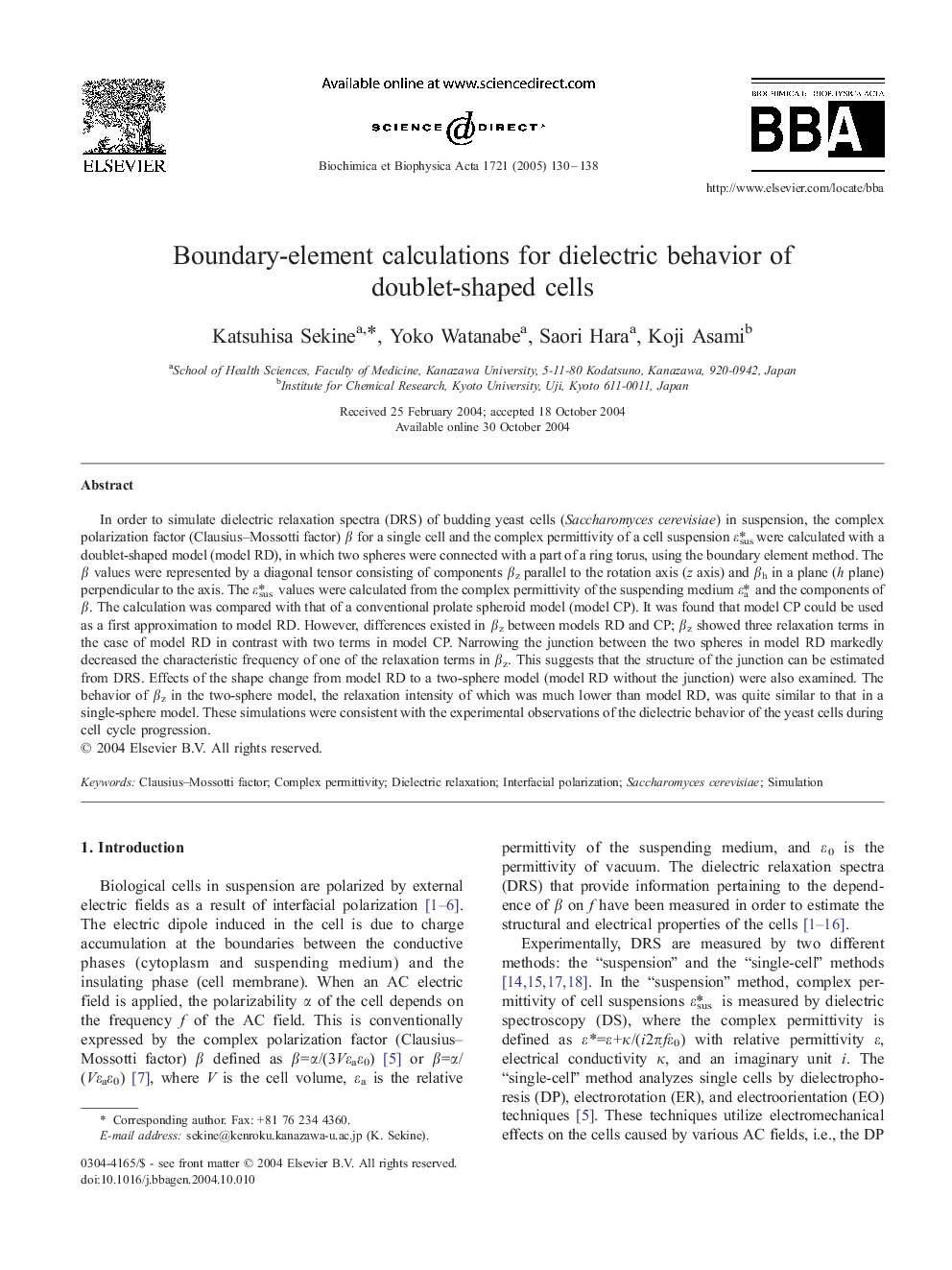| Article ID | Journal | Published Year | Pages | File Type |
|---|---|---|---|---|
| 9886167 | Biochimica et Biophysica Acta (BBA) - General Subjects | 2005 | 9 Pages |
Abstract
In order to simulate dielectric relaxation spectra (DRS) of budding yeast cells (Saccharomyces cerevisiae) in suspension, the complex polarization factor (Clausius-Mossotti factor) β for a single cell and the complex permittivity of a cell suspension εsus* were calculated with a doublet-shaped model (model RD), in which two spheres were connected with a part of a ring torus, using the boundary element method. The β values were represented by a diagonal tensor consisting of components βz parallel to the rotation axis (z axis) and βh in a plane (h plane) perpendicular to the axis. The εsus* values were calculated from the complex permittivity of the suspending medium εa* and the components of β. The calculation was compared with that of a conventional prolate spheroid model (model CP). It was found that model CP could be used as a first approximation to model RD. However, differences existed in βz between models RD and CP; βz showed three relaxation terms in the case of model RD in contrast with two terms in model CP. Narrowing the junction between the two spheres in model RD markedly decreased the characteristic frequency of one of the relaxation terms in βz. This suggests that the structure of the junction can be estimated from DRS. Effects of the shape change from model RD to a two-sphere model (model RD without the junction) were also examined. The behavior of βz in the two-sphere model, the relaxation intensity of which was much lower than model RD, was quite similar to that in a single-sphere model. These simulations were consistent with the experimental observations of the dielectric behavior of the yeast cells during cell cycle progression.
Keywords
Related Topics
Life Sciences
Biochemistry, Genetics and Molecular Biology
Biochemistry
Authors
Katsuhisa Sekine, Yoko Watanabe, Saori Hara, Koji Asami,
